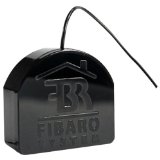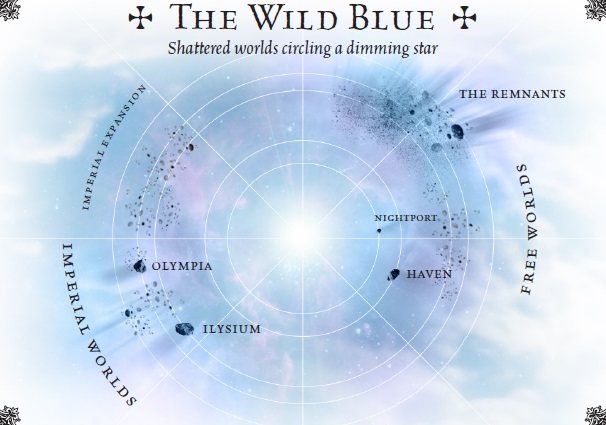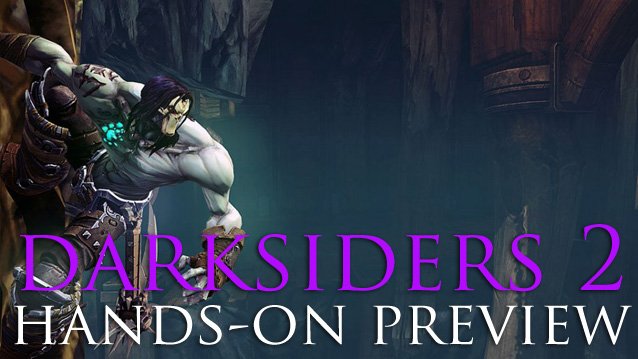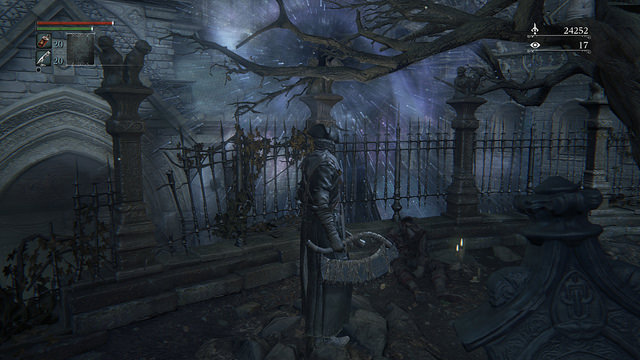

To paraphrase Henry Ford in entirely the wrong context: you can have any color you want, as long as it’s yellowy-white.
For centuries we’ve been living under the yellowish hue of incandescent bulbs, but no longer. The proliferation of cheap, bright, multicolored LEDs has given us an entirely new visual dimension to play with home decor. Not only that, but adding some automation to colored lighting opens up even more possibilities: the colors and intensity can change throughout the day, or dynamically react to external factors, like the weather.
Let’s take a whirlwind tour of some decorating tips for using colored lighting.
Let’s first take a quick look at your options for smart lighting.
Leading the smart home colored lighting systems is Philips Hue, with a range of bulb fittings, accent fixtures, and even a light strip option. However, these come at a premium cost – upwards of $60 for a single colored bulb.
 Philips 456210 Hue White and Color Ambiance A19 Bulb Starter Kit 2nd Generation, White
New and enhanced Hue white and color ambience kit now upgraded from 600 to 800 lumens with increased internal storage for added functionality
Philips 456210 Hue White and Color Ambiance A19 Bulb Starter Kit 2nd Generation, White
New and enhanced Hue white and color ambience kit now upgraded from 600 to 800 lumens with increased internal storage for added functionalityIf you have the money to buy officially branded bulbs or Friend of Hue range, Philips Hue is my personal system of choice, and thanks to an open API they’re able to connect with a huge range of other services or smart home hubs – mine is currently integrated with OpenHAB running on a Raspberry Pi. The Philips Hue system requires a Wi-Fi bridge, which you’ll find in a starter kit – the newest version of which (look for “2nd generation”) is also able to join Apple’s Homekit and be controlled by Siri.

Fibaro offers a Z-Wave controller for cheap RGB strips you can buy from China at less than $10 for 5 meters, but the Fibaro controller itself is certainly not cheap (£48, or around $70). Z-Wave is compatible with a wide range of smart hubs, including OpenHAB via a USB dongle.
 Fibaro RGBW Micro Controller Z-wave, Works with RGB/RGBW LED Strips
Fibaro RGBW Controller controls three as well as four color LED strips giving you millions of colors of light
Fibaro RGBW Micro Controller Z-wave, Works with RGB/RGBW LED Strips
Fibaro RGBW Controller controls three as well as four color LED strips giving you millions of colors of lightFinally, LIFX offers Wi-Fi based color bulbs that require no hub. These too, cost around $60 per bulb and can be integrated with a number of smart home hubs.
 LIFX Color 1000 A19 Wi-Fi Smart LED Light Bulb, Adjustable, Multicolor, Dimmable, No Hub Required
LIFX Color 1000 A19
LIFX Color 1000 A19 Wi-Fi Smart LED Light Bulb, Adjustable, Multicolor, Dimmable, No Hub Required
LIFX Color 1000 A19Be wary of buying cheaper bulbs – often based on Bluetooth – which only work with their own proprietary mobile application, and cannot be integrated with other systems.
Also be careful when mixing and matching colored lighting from different suppliers. While some bulbs or strips will offer just red, green, and blue LEDs for color mixing, other manufacturers will supplement these with white LEDs – while the Philips Hue range uses an entirely different color space (Hue Saturation Brightness, not Red Green Blue) – and so rarely matches the colors produced by other manufacturers.
Before you get started designing with color, you should know that colored light is visible because it reflects off a surface, and that means a white surface (which reflects every wavelength) is needed to get the most out of colored lighting.
Before you go buying some new lighting kit, consider the existing decor: if you have dark walls, the effect of colored lighting will be very muted, and really not worth fitting. If you have brightly colored but non-white walls, colored lighting will additively mix with that color, but again, you’ll get a less pronounced effect and probably won’t achieve the exact lighting color you were aiming for.
Ideally then, you’ll have a pure white wall or ceiling, which will become your canvas upon which to paint with light.
Negative space is a powerful concept when used in conjunction with colored lighting. Instead of bathing an entire wall or ceiling with a wash of color, consider silhouetting the light with a simple wooden cutout.
Reddit user Possumism demonstrates this concept beautifully in his daughter’s Christmas gifts, for which they requested a “Hello Kitty and Dragon computer”. The results are stunning.

Combine this concept with a Philips Hue striplight to turn your wall plaque into a fully web-controlled notification system, which can then be tied into IFTTT or other smart systems.
 Philips 259982 Friends of Hue Personal Wireless Lighting Lightstrip Single, Frustration Free
The Friends of Hue LightStrips use LED technology to deliver up to 80 percent energy savings and a long life of 20,000 hours (up to 18 years)
Philips 259982 Friends of Hue Personal Wireless Lighting Lightstrip Single, Frustration Free
The Friends of Hue LightStrips use LED technology to deliver up to 80 percent energy savings and a long life of 20,000 hours (up to 18 years)Some studies have shown blue light emitted by devices is what keeps you awake by suppressing melatonin levels – which is why a number of apps and night modes exist that aim to cut the blue light spectrum from your screen. Flux started this trend on Mac; once the sun goes down, it gives your screen an orangey-yellow tint. Now you’ll find many utilities that do the same for Windows, just your browser, or Android.
But there’s also train stations in Japan which flood blue light onto the platform to have a calming effect on passengers and prevent suicides – and it works, really well in fact. Calming should also be good for sleep, shouldn’t it?
Then there’s stage lighting theory, which states that blue is used to convey moonlight, cold, calmness or serenity in theatrical performances. What else does stage lighting tell us?
Adventurous night owls will say that red light is the least damaging to your eyes, so they use red filters on flashlights to maintain optimum vision. You may therefore want to try changing any motion activated night light rules to use a red color. This idea may be a myth though, simply lowering the intensity of the light is probably just as good.
If you’re designing with multiple colored lighting fixtures in mind, you’ll also want to read up on theories like complimentary colors and harmonies.
The point is, there’s no right answer to this and we probably all react differently based on our own psychological profile and cultural upbringing, so you should experiment to find what works for you. My own opinion, should you care: watching TV or using a computer right before bed is stupid regardless of the kind of light it’s emitting. Reading on my phone or iPad using white text on a black background is a sure fire way to fall asleep within half hour.
Luckily, colored LED lighting will let you experiment with ease. Install a single RGB bulb in your bedroom as a nightlight, try out a range of colors, and see which enables you to relax and fall asleep fastest. You could even hook up a sleep tracking gadget or app if you want to be truly scientific.
Rather than changing your existing bulbs, consider adding some notification-enabled accent lighting fixtures. They would be ideally placed in a darkened corner or alcove, so they’re visible even in the day. Here’s some ideas to get you started.
Use a glass cutting bit to cut a hole towards the bottom of a few white wine bottles, then insert a few short strips of web-connected RGB LEDs. Apply glass frosting spray to diffuse the light, and you have some attractive notification lights. Here’s an alternative design that doesn’t need holes drilling since it’s hung from above, but the effect is similar.
Perhaps not to everyone’s taste, but a fun project that can easily be adapted to provide useful notifications with IFTTT. This Instructable will show you how to make your own enchanted mushroom lights. Combine with this guide to make them into web controlled RGB notification lights using our favorite WiFi-enabled development board, the ESP8266 NodeMCU.
Marvel produces a range of 3D wall lights, my favorite of which is this Thor Hammer, which casts a nice blue light. Of course, you should be able to open one up and fit your own small color changing bulb, though I can’t find anyone who’s done so yet.
 Avengers®- The Avengers 3D Wall Art Nightlight - Thor Hammer-Thor, Marvel Fans will love the hammer nightlight- A cool way to add some light in the dark-Guaranteed!
The 3D wall art Thor hammer nightlight is a cool way to add some light in the dark
Avengers®- The Avengers 3D Wall Art Nightlight - Thor Hammer-Thor, Marvel Fans will love the hammer nightlight- A cool way to add some light in the dark-Guaranteed!
The 3D wall art Thor hammer nightlight is a cool way to add some light in the darkIf you have some basic woodworking skills, you should be able to knock up a simple dining or coffee table. Instead of wooden top though, use a piece of tempered frosted glass, and line the underside with RGB LED strips. Just imagine how relaxing it will be getting Facebook or Gmail notifications in the middle of dinner as the whole table pulsates red. Ahem.
If your woodworking skills aren’t quite up to scratch (or indeed non-existent), grab an Ikea glass-topped coffee table and just spray the underside of the glass with frosting.
Here’s one I made earlier: a fluffy cloud lamp powered by a strip of WS2812B individually controllable pixels. In my code, it has a variety of modes including sound reactive, but there’s no reason you can’t adapt it with a web interface. It makes for a stunning centerpiece in any room, and with around 200 LEDs can really light the place up.
If you’re a social addict, there’s really no limit to the number of lighting fixtures in your home that could feasibly be adapted to give you notifications on new messages. Check out this smart lighting article for ideas and IFTTT recipes to connect everything.
What novel approach do you have for using smart lights at home? Do you use any smart lighting fixtures as notifications? Or do you use color theory to help you sleep better? Let us know in the comments!




 What Can $20 Buy at These 3 MMORPG Cash Shops?
What Can $20 Buy at These 3 MMORPG Cash Shops? How to avoid the Skull Soldiers in Episode 1 MGS V: The Phantom Pain
How to avoid the Skull Soldiers in Episode 1 MGS V: The Phantom Pain Darksiders 2 Hands-On Preview at E3 2012
Darksiders 2 Hands-On Preview at E3 2012 Knack Wiki: Everything you need to know about the game .
Knack Wiki: Everything you need to know about the game . How to earn the Impurity Rune in Bloodborne: The Old Hunters DLC Guide
How to earn the Impurity Rune in Bloodborne: The Old Hunters DLC Guide